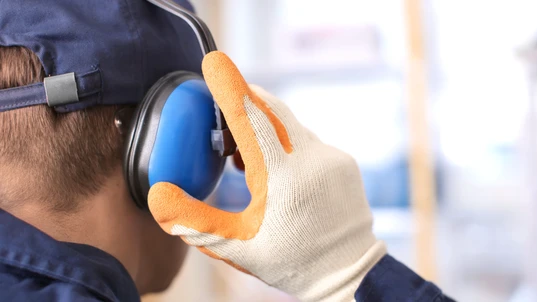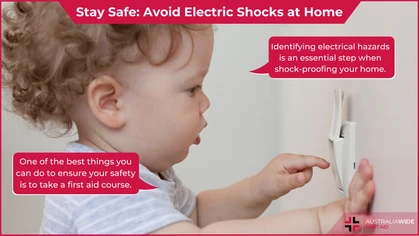Managing Occupational Hearing Hazards

Danger
 Hazardous noise is a known workplace hazard that can lead to temporary or permanent hearing loss, tinnitus, and other types of injuries.
As an employer, it is your responsibility to identify and manage the risks associated with noise-related injury in the workplace.
Hazardous noise is a known workplace hazard that can lead to temporary or permanent hearing loss, tinnitus, and other types of injuries.
As an employer, it is your responsibility to identify and manage the risks associated with noise-related injury in the workplace.
Understanding Hearing Hazards
Occupational hearing loss can occur due to noise, vibration, and ototoxic substances. Mechanical impacts, high-velocity air or fluid flow, and vibrating surfaces can cause hazardous noise in a workplace. Hard, non-absorbent surfaces can also increase noise levels due to reverberation. Exposure to both hand-arm vibration (HAV) and whole-body vibration (WBV) can increase the likelihood of hearing loss. Ototoxic substances like solvents, heavy metals, asphyxiants, and some medications can also lead to hearing loss. It is recommended that the noise exposure of workers exposed to any ototoxic substances be reduced to 80 dB(A) or below and they should undergo audiometric testing. Control measures such as substitution, isolation, local ventilation, and personal protective equipment should be implemented to reduce chemical exposures.
Types of Injury
Hazardous noise can lead to:- Hearing loss (gradual or immediate)
- Tinnitus (ringing or buzzing in the ears)
- Hyperacusis (increased sensitivity to sound)
- Acoustic shock (sudden, intense noise exposure)
- Communication difficulties
- Decreased concentration and productivity
- Increased stress and fatigue levels
- Disturbances in sleep and rest patterns
Identifying the Hazard
To identify the hazard all workplaces should undertake noise assessments, use suitable control measures, provide personal protective equipment to workers, and test noise levels. Loud noise is not the only cause of occupational hearing loss. Vibrations and ototoxic substances can also cause damage to the ears, and also require risk assessments and management.Loud Noise
The model Code of Practice: Managing Noise and Preventing Hearing Loss at Work guides you on how to do a workplace noise assessment, and includes a ‘noise ready reckoner’ tool to calculate exposure. Risk of noise-related injury increases depending on how loud the noise is and how long the worker is exposed to it. The noise standard states that workers should not be exposed to levels higher than 85 decibels over 8 hours of work. This is used as a guide for calculation of higher decibels for shorter time periods, and is an indication of when noise-reducing PPE should be worn. According to Safe Work Australia the noise level while working should:- be lower than 50 decibels if your work involves high concentration.
- be lower than 70 decibels if your work is routine, fast-paced, demands attentiveness, and you need to have conversations.
- never exceed 140 decibels, as exposure above this can cause immediate damage.
Vibration
Vibration exposure can cause hand-arm vibration syndrome (HAVS), a condition that can cause long-term damage to the nerves, blood vessels, and joints in the hands and arms. Workers who may be at risk include those who use vibrating tools such as:- Pneumatic and electrical rotary tools such as concrete breakers, grinders, sanders, and drills.
- Percussive tools such as chippers and riveters.
- Petrol-powered tools such as lawnmowers, brush-cutters, and chainsaws.
- Carry out risk assessments to identify and evaluate the vibration exposure of workers.
- Implement suitable control measures, such as providing anti-vibration gloves, and equipment with lower vibration levels.
Ototoxic
Ototoxic substances can damage the inner ear and lead to permanent hearing loss or tinnitus. The most common routes of entry for these ototoxic substances are via skin absorption, inhalation and, to a lesser extent, ingestion (mainly due to poor personal hygiene practices at work). There are three major classes of ototoxic substances:- Solvents e.g. butanol, carbon disulphide, ethanol.
- Heavy metals e.g. arsenic, lead, manganese.
- Asphyxiants e.g. acrylonitrile, carbon monoxide, hydrogen cyanide.
- Painting
- Printing
- Boat building
- Construction
- Manufacturing
- Regularly identify and assess the risks of exposure through risk assessments.
- Implement suitable control measures, such as using alternative non-ototoxic substances and providing personal protective equipment (PPE) to workers.
- Monitor workers' exposure levels through regular testing.
How Many People Get Injured?
Noise-induced hearing loss is the single greatest cause of permanent hearing loss in Australia - and it's also the most preventable. Over the past four years more than 10,000 workers have been affected by noise-related injuries in NSW workplaces, with more than 90 per cent left permanently disabled.First Aid Training
First aid training is essential for preventing and managing injuries in the workplace. By completing first aid training, workers are better equipped to identify, manage and prevent injuries in the workplace. Australia Wide First Aid provides comprehensive first aid training courses for workplaces and individuals. The courses cover various topics, including managing injuries related to hazardous noise exposure. Exposure to hazardous noise in the workplace can result in serious injuries, such as hearing loss and tinnitus. Employers must implement appropriate measures to protect their workers from noise-related injuries. However, despite taking all preventive measures, accidents can still occur in the workplace. That is why first aid training is essential for workplaces and individuals. Here are some important points to highlight the importance of first aid training in managing noise-related injuries:- Noise-related injuries can happen suddenly and unexpectedly, and prompt action is necessary to prevent further damage. First aid training equips workers with the necessary skills and knowledge to act quickly and effectively in case of an emergency.
- First aid training not only helps workers respond to accidents but also empowers them to identify and prevent potential hazards in the workplace. Workers who are aware of potential noise hazards are more likely to take preventative measures and avoid accidents.
- Employers are legally obligated to provide workplace first aid facilities and equipment. However, having trained first aiders in the workplace can make all the difference in providing prompt and effective assistance to injured workers.
- By providing first aid training to workers, employers demonstrate their commitment to creating a safe work environment and protecting the health and wellbeing of their employees.
Conclusion
As an employer, it is important to recognize that hazardous noise is a workplace danger that can cause permanent or temporary hearing loss, tinnitus, and other injuries. Therefore, it is your responsibility to identify and manage any risks associated with noise-related injuries at work. This can be accomplished by following a systematic process that involves identifying sources of noise that could cause hearing loss, assessing the risks involved, implementing risk control measures, and reviewing them regularly to reduce the risk of injury. Providing first aid training to workers is essential for preventing and managing injuries in the workplace.
Originally published at
https://www.australiawidefirstaid.com.au/resources/managing-occupational-hearing-hazards
as part of the Australia Wide First Aid Articles Library









